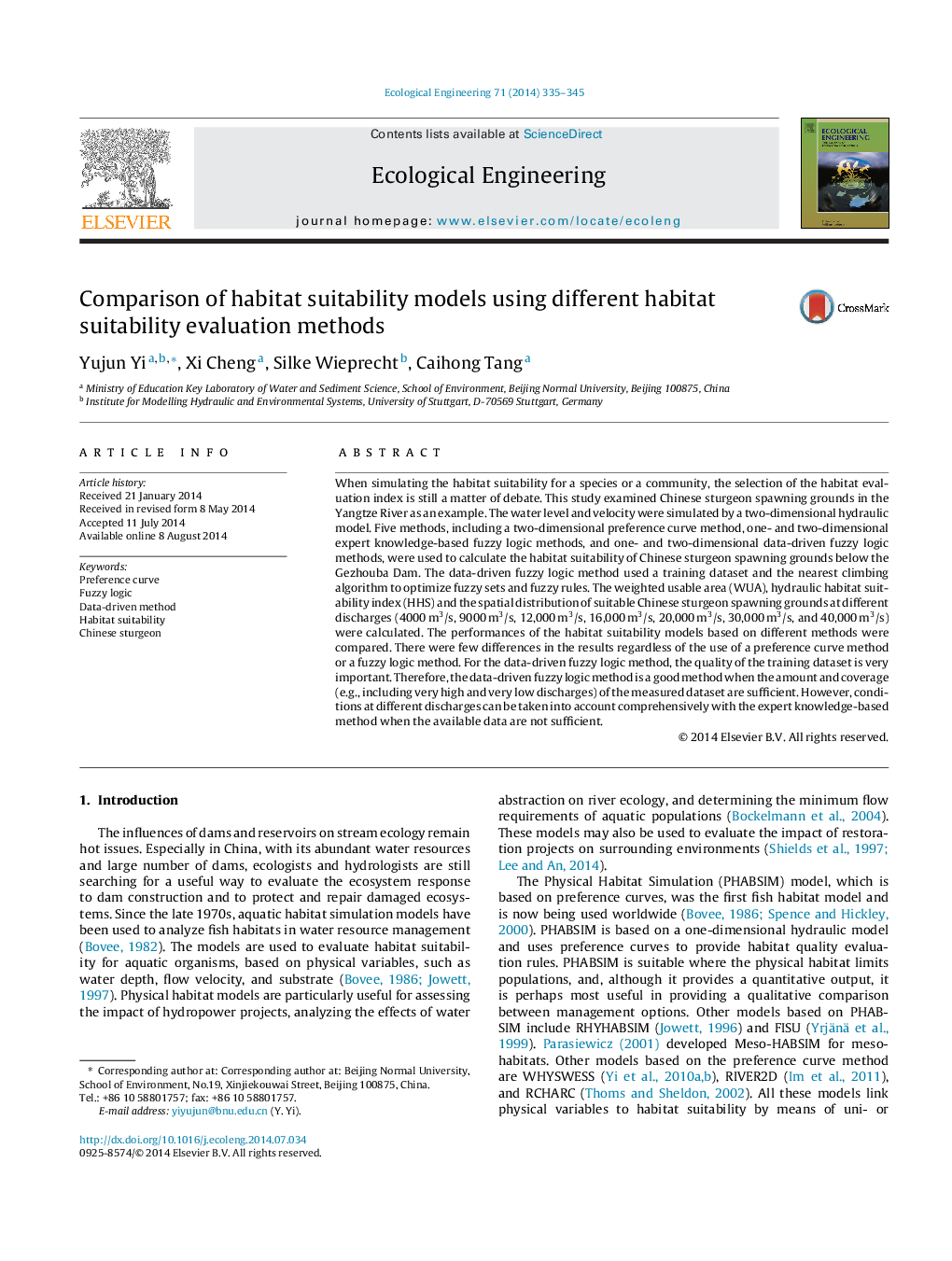| Article ID | Journal | Published Year | Pages | File Type |
|---|---|---|---|---|
| 4389169 | Ecological Engineering | 2014 | 11 Pages |
Abstract
When simulating the habitat suitability for a species or a community, the selection of the habitat evaluation index is still a matter of debate. This study examined Chinese sturgeon spawning grounds in the Yangtze River as an example. The water level and velocity were simulated by a two-dimensional hydraulic model. Five methods, including a two-dimensional preference curve method, one- and two-dimensional expert knowledge-based fuzzy logic methods, and one- and two-dimensional data-driven fuzzy logic methods, were used to calculate the habitat suitability of Chinese sturgeon spawning grounds below the Gezhouba Dam. The data-driven fuzzy logic method used a training dataset and the nearest climbing algorithm to optimize fuzzy sets and fuzzy rules. The weighted usable area (WUA), hydraulic habitat suitability index (HHS) and the spatial distribution of suitable Chinese sturgeon spawning grounds at different discharges (4000Â m3/s, 9000Â m3/s, 12,000Â m3/s, 16,000Â m3/s, 20,000Â m3/s, 30,000Â m3/s, and 40,000Â m3/s) were calculated. The performances of the habitat suitability models based on different methods were compared. There were few differences in the results regardless of the use of a preference curve method or a fuzzy logic method. For the data-driven fuzzy logic method, the quality of the training dataset is very important. Therefore, the data-driven fuzzy logic method is a good method when the amount and coverage (e.g., including very high and very low discharges) of the measured dataset are sufficient. However, conditions at different discharges can be taken into account comprehensively with the expert knowledge-based method when the available data are not sufficient.
Related Topics
Life Sciences
Agricultural and Biological Sciences
Ecology, Evolution, Behavior and Systematics
Authors
Yujun Yi, Xi Cheng, Silke Wieprecht, Caihong Tang,
